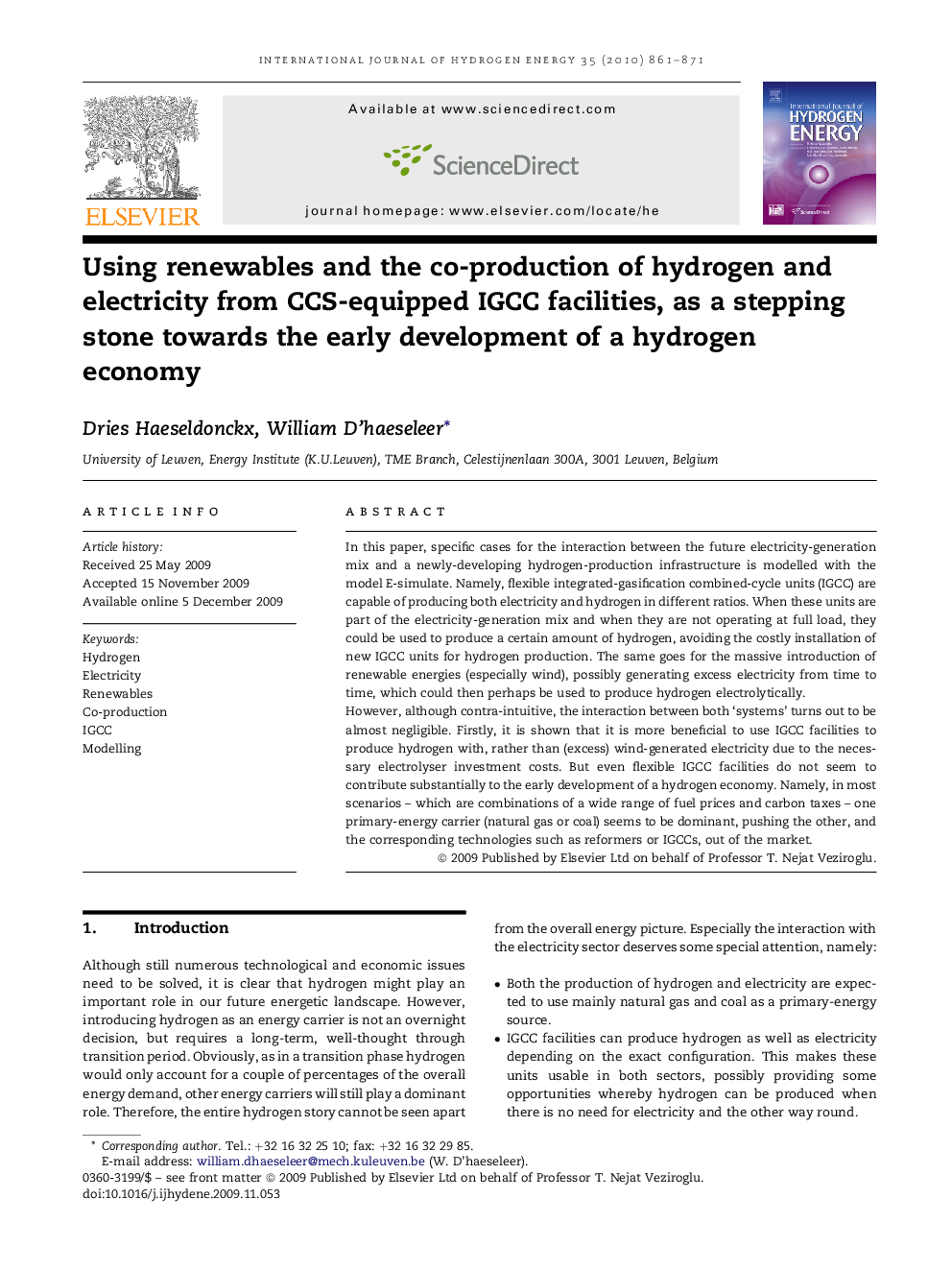| Article ID | Journal | Published Year | Pages | File Type |
|---|---|---|---|---|
| 1273477 | International Journal of Hydrogen Energy | 2010 | 11 Pages |
In this paper, specific cases for the interaction between the future electricity-generation mix and a newly-developing hydrogen-production infrastructure is modelled with the model E-simulate. Namely, flexible integrated-gasification combined-cycle units (IGCC) are capable of producing both electricity and hydrogen in different ratios. When these units are part of the electricity-generation mix and when they are not operating at full load, they could be used to produce a certain amount of hydrogen, avoiding the costly installation of new IGCC units for hydrogen production. The same goes for the massive introduction of renewable energies (especially wind), possibly generating excess electricity from time to time, which could then perhaps be used to produce hydrogen electrolytically.However, although contra-intuitive, the interaction between both ‘systems’ turns out to be almost negligible. Firstly, it is shown that it is more beneficial to use IGCC facilities to produce hydrogen with, rather than (excess) wind-generated electricity due to the necessary electrolyser investment costs. But even flexible IGCC facilities do not seem to contribute substantially to the early development of a hydrogen economy. Namely, in most scenarios – which are combinations of a wide range of fuel prices and carbon taxes – one primary-energy carrier (natural gas or coal) seems to be dominant, pushing the other, and the corresponding technologies such as reformers or IGCCs, out of the market.
